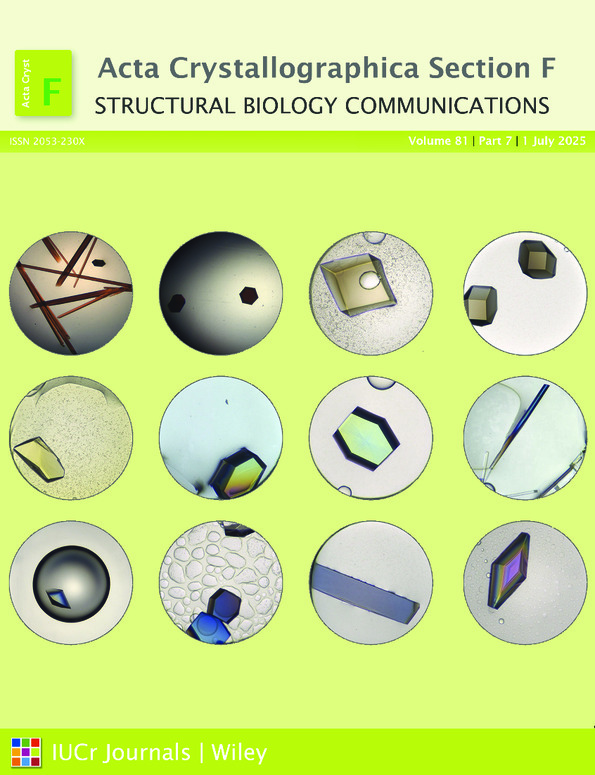Crystal structures of Escherichia coli glucokinase and insights into phosphate binding
Abstract
Here, we report the crystal structure of Escherichia coli glucokinase (GLK), which has phosphate bound in the cleft between the α and β domains adjacent to the active site. A ternary complex consisting of GLK, glucose and phosphate is also reported in this work. Diffraction data were collected at 2.63 Å resolution for the phospate-bound form (Rwork/Rfree = 0.191/0.230) and at 2.54 Å resolution for the ternary complex (Rwork/Rfree = 0.202/0.258), both at 297 K. A B-factor analysis of the phosphate-bound GLK structure revealed consistently lower values for phosphate-interacting basic residues in the α4, α5 and α9 helices, while significant root-mean-square deviation (r.m.s.d.) spikes indicated flexibility in regions preceding β1 and within the loop between the β5 and β6 sheets of the α domain. In the ternary complex, phosphate is bound adjacent to glucose, and the B factors for the α4, α5 and α9 helices were further reduced, while r.m.s.d. spikes were observed at the end of the β10 sheet and within the α6 helix of the β-domain. This structural characterization suggests that phosphate could influence the activity of GLK by altering glucose binding and modulating interactions with a loop-interacting regulatory protein.




